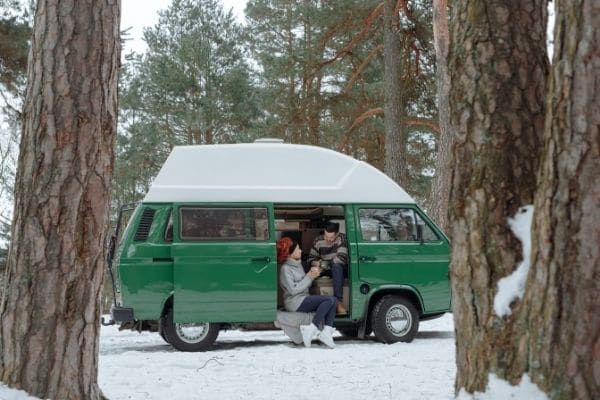Winter camping is becoming increasingly popular among recreational vehicle owners. Winter camping has its own set of joy and fun activities, different from camping in warm weather. Watching the snowfall and freezing from inside the RV while you are all warm and toasty can feel like a dream. Winter camping is just as popular as camping during other seasons. Aside from cold noses and toes, these low temperatures can freeze your RV plumbing system. We provide you with a detailed analysis of how to keep RV pipes from freezing while camping. We advise you to go through this article!
To keep your water flowing freely, you will need to take some preventative measures.
Page Contents
How to Keep RV Pipes from Freezing while Camping in Winter
1.Insulate or Heat your drinking water hose
The most exposed part of your system to the outside elements is your water hose. Keeping your pipes from freezing starts with this critical piece. You can try using regular foam house insulation. You can slide the hose into the open insulation sleeve if you have to install it. You can also seal it shut by removing the tape covering the adhesive on the open sides and sticking them together. Unless you want to take off the insulation every time you store your water hose and then reinstall it. This will undoubtedly make your hose a lot bulkier and may present some store challenges.
2. Use RV Skirting
Once you have figured out how to insulate RV water hoses, it is time to look at your internal plumbing. You must have seen skirting on many of the full-timers at various campgrounds; this is undoubtedly a great way to keep your camper insulated on the go as well! Skirting keeps cold air from getting to your undercarriage and the pipes. The best material for travel is vinyl skirting. The installation is relatively easy and can adapt to differences in terrain and ground levels. The best thing about skirting is that you can use it in the summer and keep your RV cooler. It should not take up too much of your storage space to travel with.
3. Preventing your interior water pipes and water heater from freezing
Most well protected from freezing conditions will be your interior water pipes. You are already using your liquid propane furnace to keep you warm. You may put it to work keeping your pipes warm too by opening the cabinet doors that expose your plumbing—as for your water heater, having that freeze would surely be destructive and would almost result in a high-dollar replacement. You have two options to keep that from happening, keep your water heater constantly on, or you can drain it until warmer weather comes around.
4. Keep your RV sewer pipes and tanks from freezing.
This is one of the oldest tricks in the book for keeping your pipes from freezing. You can save a constant trickle of water running. It is the one thing you should never do with your sewer pipe in freezing weather. The water has to make it down the sewer pipe when camping, which is fully exposed to the outside elements. You can keep your sewer hose flowing by insulating it with pipe insulation like your water hose.
5. Freshwater Tank Heating
Skirting may help you to keep your freshwater tank from freezing and take other preventative measures as well! Some RVs will come equipped with heated tank compartments, but most won’t. You can also get a tank heater that sticks to the bottom of the freshwater tank. You have to make sure that you don’t fill your freshwater tank up completely. It would help if you remembered that water expands when it freezes.
6. Preventing your RV water filter from freezing
It is a small part of your overall water system, but we are sure you will want to know how to keep RV water filters from freezing on you! Using foam insulation, you can get away and heat tape to shield the water filter from the outside cold, just like your water hose. Sometimes, it’s not worth the hassle, or you are going into too cold areas to beat with foam insulation.
7. Cover the water tank with a wooden box
If your RV is parked for a while, tank insulation can be exposed, and holding tanks can be fabricated. Under this situation, you should build a small light wood box around the tank and line it with fiberglass. To provide a safe heat source, a small electric bulb can be used.
8. Use heating pads
Adding heating pads designed strictly for the RV holding tank is another alternative that can be considered. They are generally 12- volt products to pull power from the converter or batteries. These heating pads can be purchased from any RV parts leadership camping catalogs and will permit you to use your holding tanks as you usually would without fear of them freezing up.
When it comes to keeping your RV pipes from freezing, prevention is your best friend. As long as you have a prevention plan for each area of your RV water system, you will be able to sleep nicely, knowing your pipes are nice and toasty. We have provided you with a detailed article regarding how to keep RV pipes from freezing while camping. We advise you to go through this article thoroughly. We are sure that this article will be beneficial for you, and you will be able to understand every point regarding RV pipes used while camping.




